-
 Bitcoin
Bitcoin $105,532.8157
0.77% -
 Ethereum
Ethereum $2,548.2202
1.33% -
 Tether USDt
Tether USDt $1.0002
-0.03% -
 XRP
XRP $2.1658
1.38% -
 BNB
BNB $647.8634
0.54% -
 Solana
Solana $151.9004
5.13% -
 USDC
USDC $0.9998
-0.01% -
 Dogecoin
Dogecoin $0.1757
-0.78% -
 TRON
TRON $0.2728
1.24% -
 Cardano
Cardano $0.6296
0.95% -
 Hyperliquid
Hyperliquid $40.9018
1.86% -
 Sui
Sui $3.0030
4.30% -
 Bitcoin Cash
Bitcoin Cash $460.9894
8.08% -
 Chainlink
Chainlink $13.1954
1.60% -
 UNUS SED LEO
UNUS SED LEO $9.2807
2.61% -
 Avalanche
Avalanche $19.0609
0.65% -
 Stellar
Stellar $0.2573
0.56% -
 Toncoin
Toncoin $2.9704
1.32% -
 Shiba Inu
Shiba Inu $0.0...01197
-0.39% -
 Litecoin
Litecoin $85.9390
1.13% -
 Hedera
Hedera $0.1534
-0.05% -
 Polkadot
Polkadot $3.7860
0.74% -
 Ethena USDe
Ethena USDe $1.0000
-0.04% -
 Monero
Monero $317.1834
1.33% -
 Dai
Dai $0.9997
-0.02% -
 Bitget Token
Bitget Token $4.5199
-0.24% -
 Pepe
Pepe $0.0...01111
1.43% -
 Uniswap
Uniswap $7.1573
-0.52% -
 Pi
Pi $0.6033
-0.63% -
 Aave
Aave $273.9232
0.85%
Changes in daily limit orders: a real-time weather vane of the main force's intentions?
Daily limit orders in crypto trading reveal institutional strategies, acting as real-time indicators of accumulation, distribution, or market manipulation.
Jun 14, 2025 at 12:56 pm
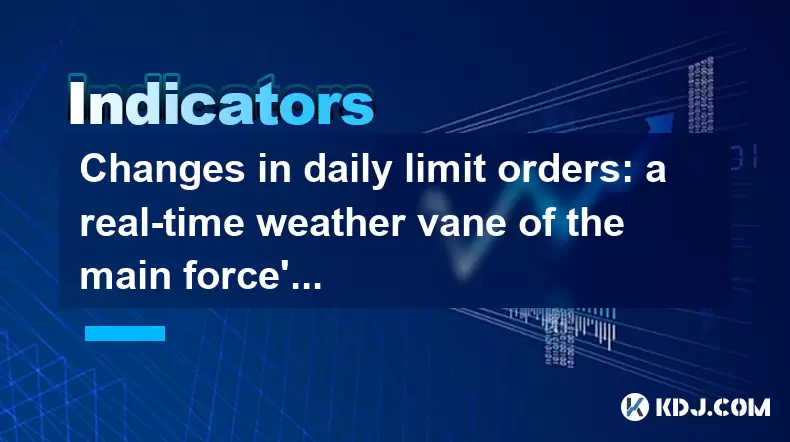
Understanding Daily Limit Orders in Cryptocurrency Trading
In the fast-paced world of cryptocurrency trading, limit orders play a crucial role in shaping market dynamics. A limit order allows traders to specify the maximum or minimum price at which they are willing to buy or sell a particular asset. In the context of daily limit orders, these are typically time-bound instructions that expire at the end of the trading day unless executed.
The presence and fluctuation of daily limit orders can serve as an indicator for understanding institutional activity and large-scale trader behavior. These orders often reflect strategic positioning rather than impulsive decisions. When analyzing daily limit orders, it's essential to consider how they interact with other order types like market orders and stop-losses, especially during volatile periods.
The Role of Limit Orders in Revealing Main Force Intentions
Limit orders placed by major players—often referred to as "main forces"—can act as real-time indicators of their potential strategies. Large traders or institutions frequently use limit orders to accumulate or distribute assets without causing immediate price shocks. The placement of these orders, particularly when clustered around key support or resistance levels, may signal future price direction.
For instance, if a significant number of buy limit orders appear just below the current market price, this could indicate strong interest from large players who are waiting for a pullback before entering positions. Conversely, a concentration of sell limit orders above the current price might suggest profit-taking or distribution activities.
These patterns are not always immediately visible on standard order books but can be inferred through advanced tools such as on-chain analytics platforms or depth-of-market (DOM) viewers that provide granular insights into order flow.
How to Monitor Daily Limit Order Changes Effectively
To leverage daily limit order changes as a real-time barometer, traders need access to tools capable of visualizing and interpreting order book data effectively. Here’s how you can monitor these changes:
- Use depth-of-market (DOM) interfaces that show bid and ask sizes across different price levels.
- Integrate order flow analysis software that highlights unusual spikes in limit order volume.
- Track on-chain transaction data using platforms like Glassnode or Whale Alert to correlate whale movements with order book activity.
- Set up alerts for sudden increases or decreases in open interest for specific price zones.
- Compare historical order book snapshots to identify recurring patterns near critical technical levels.
By combining these methods, traders can better interpret whether limit order placements are indicative of accumulation, distribution, or simply algorithmic noise.
Technical Indicators That Complement Limit Order Analysis
While limit order data provides valuable insight, it should be used alongside traditional technical indicators for confirmation. Some of the most effective tools include:
- Volume Profile: Helps identify price levels where the most trading activity has occurred, often aligning with significant limit order clusters.
- Order Flow Imbalance: Measures the difference between buy and sell pressure at various price points, helping anticipate short-term directional bias.
- Time and Sales Data: Offers a tick-by-tick view of trades, allowing traders to see how quickly limit orders are being filled versus remaining untouched.
- Market Depth Heatmaps: Visual representations of buy and sell walls that highlight areas of strong support or resistance based on limit order density.
These complementary techniques enhance the interpretation of limit order behavior, making it easier to distinguish between genuine institutional moves and retail-driven volatility.
Common Pitfalls When Interpreting Limit Order Activity
Despite its usefulness, relying solely on limit order data can lead to misinterpretation if not approached carefully. One common mistake is assuming that all large orders represent actual intent to trade. In reality, some players use spoofing tactics, placing fake orders to manipulate perception before canceling them.
Another issue arises when traders overreact to isolated instances of limit order clustering without considering broader market conditions. It’s important to assess these signals within the context of macro trends, news events, and overall liquidity conditions.
Moreover, many exchanges allow hidden orders or iceberg orders, which do not fully display the true size of pending trades. This can obscure the actual limit order landscape, leading to incorrect assumptions about market depth and player intentions.
Frequently Asked Questions (FAQs)
Q: Can I see daily limit orders directly on my trading platform?
Most mainstream platforms do not display raw order book data in real-time, but some professional-grade terminals like BitMEX Trade Explorer or Bybit Derivatives offer enhanced DOM views. You may also use third-party tools like Glassnode Studio or CryptoQuant for deeper insights into order flow anomalies.
Q: How do I differentiate between genuine limit orders and spoofing attempts?
Look for rapid cancellations of large orders before execution, especially in high-volume pairs. Consistent patterns of order placement followed by quick removals may indicate spoofing. Cross-referencing with time-and-sales data can help confirm whether the orders were legitimate or manipulative.
Q: Are daily limit orders more reliable than weekly or monthly ones?
Daily limit orders tend to reflect more immediate intentions due to their shorter lifespan. Weekly or monthly orders may remain unfilled for longer periods and could be part of long-term strategies. However, both types should be analyzed in conjunction with market sentiment and volume behavior.
Q: Do all cryptocurrencies exhibit meaningful limit order activity?
No. Highly liquid assets like Bitcoin (BTC) and Ethereum (ETH) usually have more transparent and actionable limit order data compared to smaller altcoins. Less popular tokens may lack sufficient depth or institutional participation, making their order books less informative for gauging main force intentions.
Disclaimer:info@kdj.com
The information provided is not trading advice. kdj.com does not assume any responsibility for any investments made based on the information provided in this article. Cryptocurrencies are highly volatile and it is highly recommended that you invest with caution after thorough research!
If you believe that the content used on this website infringes your copyright, please contact us immediately (info@kdj.com) and we will delete it promptly.
- Solana (SOL) Price Prediction: $200 Soon? Experts Are Betting on Ruvi AI (RUVI) As Investors Enjoy 9,200% Potential
- 2025-06-16 00:45:12
- Fedrok AG is a Swiss blockchain company focused on combating climate change by transforming the carbon credit market.
- 2025-06-16 00:45:12
- NEXO Will Host an AMA on X on Crypto Taxation Featuring Representatives from Koinly
- 2025-06-16 00:40:15
- OGV to OGN Migration Process Will End on May 27th
- 2025-06-16 00:40:15
- Blockchain fintech firm Liquid Noble says it's working to improve the user experience for investors in tokenized precious metals
- 2025-06-16 00:35:12
- DIA will host an AMA on X with PeaPods Finance
- 2025-06-16 00:35:12
Related knowledge
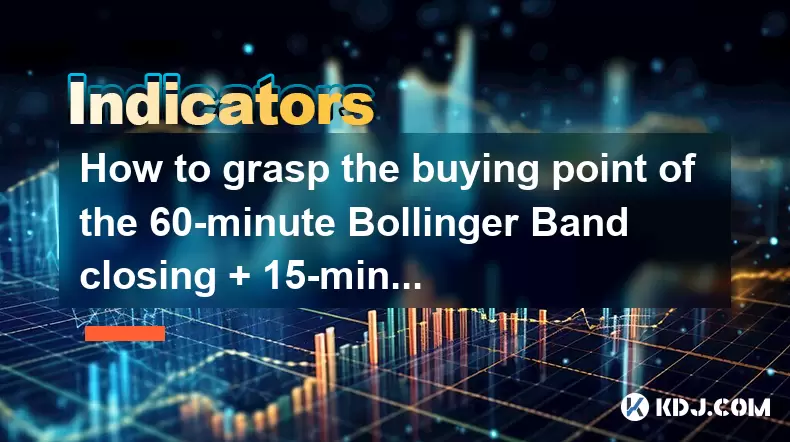
How to grasp the buying point of the 60-minute Bollinger Band closing + 15-minute MACD bottom divergence?
Jun 16,2025 at 12:03am
Understanding the Bollinger Band Closing Signal on a 60-Minute ChartThe Bollinger Band closing signal refers to a situation where the price closes outside the upper or lower band and then re-enters it in the subsequent candlestick. In this context, we focus on the lower Bollinger Band closing, which indicates a potential reversal from a downtrend. On th...
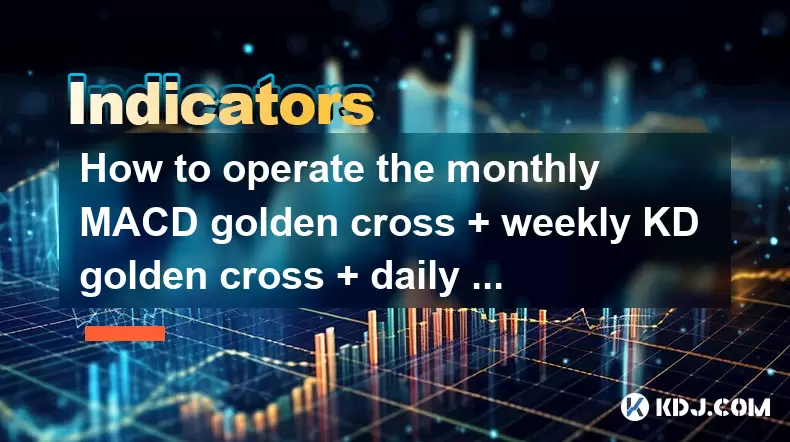
How to operate the monthly MACD golden cross + weekly KD golden cross + daily volume breakthrough?
Jun 15,2025 at 05:36am
Understanding the Strategy: Monthly MACD Golden CrossTo effectively operate the monthly MACD golden cross, traders must first understand what this signal entails. The MACD (Moving Average Convergence Divergence) golden cross occurs when the MACD line crosses above the signal line on a given chart timeframe. When this happens on the monthly chart, it sug...
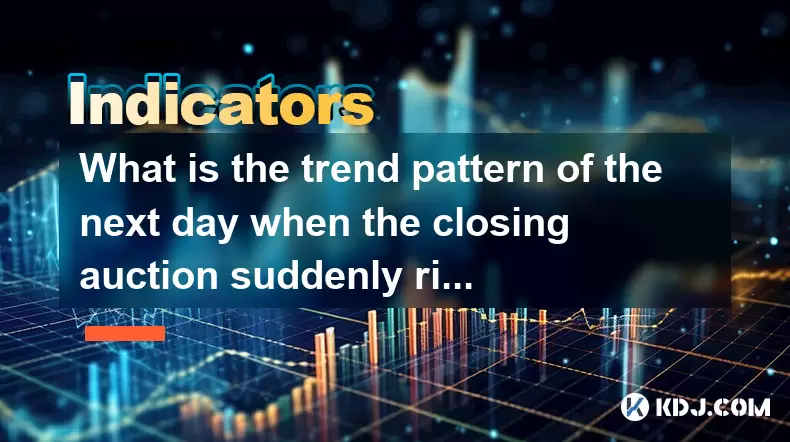
What is the trend pattern of the next day when the closing auction suddenly rises?
Jun 15,2025 at 08:15am
Understanding Closing Auctions in Cryptocurrency MarketsIn the context of cryptocurrency trading, a closing auction refers to a mechanism used by exchanges to determine the closing price of an asset at the end of a trading session. This process typically occurs within a short time window before the market closes for the day and aims to provide a fair an...

What does it mean when the volume fluctuates during the sideways trading at high levels?
Jun 15,2025 at 10:28am
Understanding Volume Fluctuations in Sideways TradingWhen volume fluctuates during sideways trading at high levels, it refers to the changes in the number of assets traded over a given period while the price remains relatively stable, moving within a defined range. This phenomenon typically occurs when the market lacks a clear directional bias—neither b...
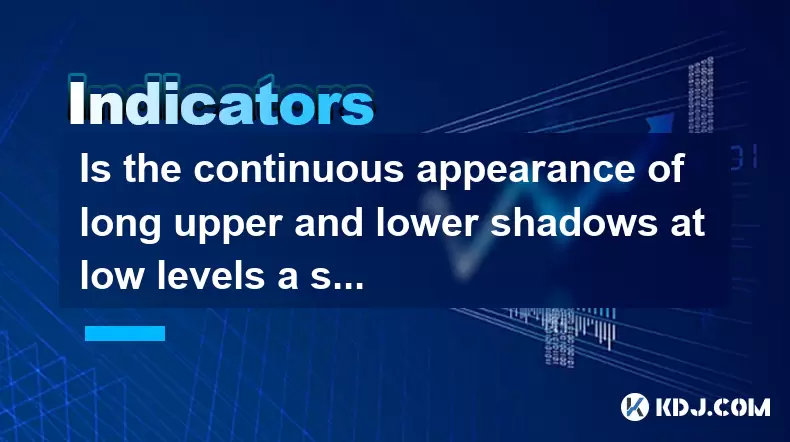
Is the continuous appearance of long upper and lower shadows at low levels a signal of accumulation?
Jun 15,2025 at 01:43am
Understanding Long Upper and Lower Shadows in Candlestick ChartsIn the world of cryptocurrency trading, candlestick patterns are widely used to analyze price movements. A long upper shadow, also known as a wick or tail, indicates that the price rose significantly during the period but was pushed back down by selling pressure. Conversely, a long lower sh...
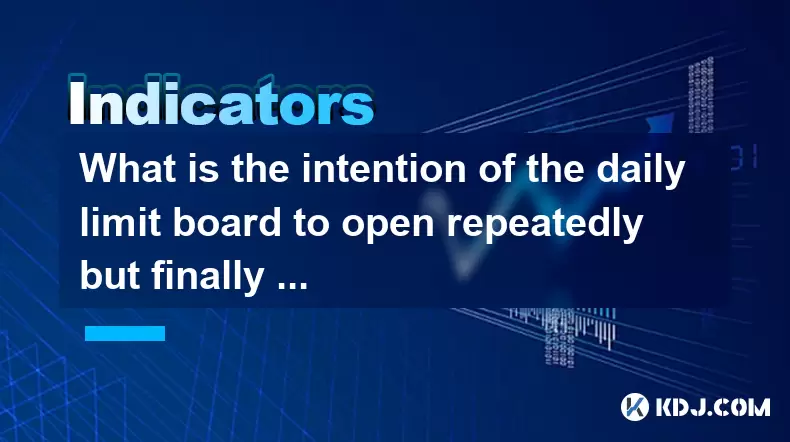
What is the intention of the daily limit board to open repeatedly but finally close?
Jun 15,2025 at 01:08am
Understanding the Daily Limit Board in Cryptocurrency TradingIn cryptocurrency trading, a daily limit board refers to a price movement restriction mechanism applied by certain exchanges or regulatory bodies. This mechanism is primarily used to prevent extreme volatility and panic selling or buying during periods of intense market fluctuation. When an as...

How to grasp the buying point of the 60-minute Bollinger Band closing + 15-minute MACD bottom divergence?
Jun 16,2025 at 12:03am
Understanding the Bollinger Band Closing Signal on a 60-Minute ChartThe Bollinger Band closing signal refers to a situation where the price closes outside the upper or lower band and then re-enters it in the subsequent candlestick. In this context, we focus on the lower Bollinger Band closing, which indicates a potential reversal from a downtrend. On th...

How to operate the monthly MACD golden cross + weekly KD golden cross + daily volume breakthrough?
Jun 15,2025 at 05:36am
Understanding the Strategy: Monthly MACD Golden CrossTo effectively operate the monthly MACD golden cross, traders must first understand what this signal entails. The MACD (Moving Average Convergence Divergence) golden cross occurs when the MACD line crosses above the signal line on a given chart timeframe. When this happens on the monthly chart, it sug...

What is the trend pattern of the next day when the closing auction suddenly rises?
Jun 15,2025 at 08:15am
Understanding Closing Auctions in Cryptocurrency MarketsIn the context of cryptocurrency trading, a closing auction refers to a mechanism used by exchanges to determine the closing price of an asset at the end of a trading session. This process typically occurs within a short time window before the market closes for the day and aims to provide a fair an...

What does it mean when the volume fluctuates during the sideways trading at high levels?
Jun 15,2025 at 10:28am
Understanding Volume Fluctuations in Sideways TradingWhen volume fluctuates during sideways trading at high levels, it refers to the changes in the number of assets traded over a given period while the price remains relatively stable, moving within a defined range. This phenomenon typically occurs when the market lacks a clear directional bias—neither b...

Is the continuous appearance of long upper and lower shadows at low levels a signal of accumulation?
Jun 15,2025 at 01:43am
Understanding Long Upper and Lower Shadows in Candlestick ChartsIn the world of cryptocurrency trading, candlestick patterns are widely used to analyze price movements. A long upper shadow, also known as a wick or tail, indicates that the price rose significantly during the period but was pushed back down by selling pressure. Conversely, a long lower sh...

What is the intention of the daily limit board to open repeatedly but finally close?
Jun 15,2025 at 01:08am
Understanding the Daily Limit Board in Cryptocurrency TradingIn cryptocurrency trading, a daily limit board refers to a price movement restriction mechanism applied by certain exchanges or regulatory bodies. This mechanism is primarily used to prevent extreme volatility and panic selling or buying during periods of intense market fluctuation. When an as...
See all articles

























































































